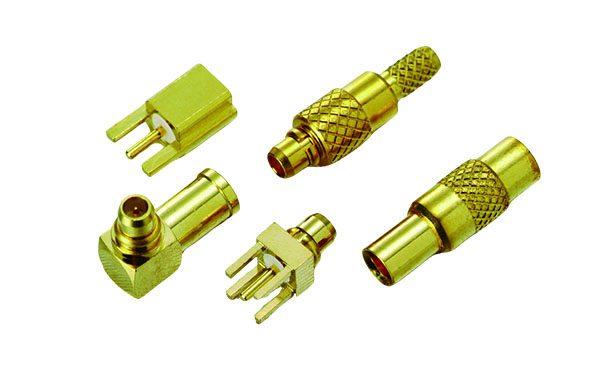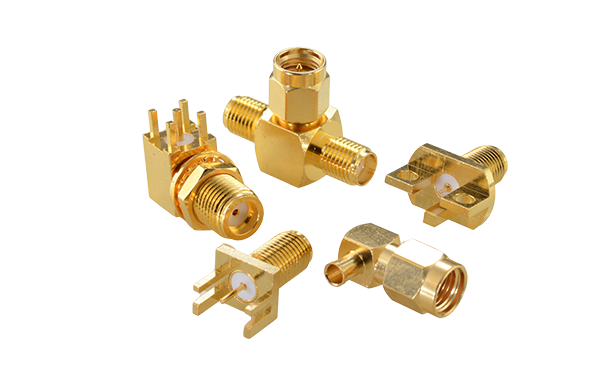- HOME
- Applications
- Blog
- The Ultimate Guide to RF Attenuators: Definition, Functions, and Applications
The Ultimate Guide to RF Attenuators: Definition, Functions, and Applications
25-03-31
RF attenuators play a key role in the rapid development of modern wireless communication technology. With the popularization of mobile communication, satellite communication and Internet equipment, signal stability and precise control become crucial. RF attenuator can effectively adjust the signal strength to avoid overloading the receiver caused by overly strong signals. At the same time, reduce interference to ensure the quality of communication. Therefore, RF attenuators have become an indispensable component in the design, testing and application of wireless communication equipment.
〈Extended Reading: Understanding Hermetic Sealing Technology and Hermetic Connectors in RF Applications〉
What are RF Attenuators?
RF Attenuators are passive components used to reduce the strength of radio frequency (RF) signals. By absorbing or dissipating part of the electrical energy to reduce the power of the signal without seriously affecting the waveform or frequency characteristics of the signal. RF attenuators are widely used in wireless communications, radar, test equipment, and RF circuits to adjust signal strength to prevent receiver overload, reduce interference, or provide a more stable test environment. RF attenuators are usually expressed in decibels (dB), and common types include fixed, variable, and programmable attenuators for different applications.
Main Functions of RF Attenuator
RF attenuator (radio frequency attenuator) is a passive component used to reduce the power of radio frequency (RF) or microwave signals, often used in wireless communications, test and measurement, signal conditioning, etc. The main functions of RF attenuator are as follows:
〈Extended Reading: Explore Microwave Frequency and Their Applications in RF Microwave Connectors〉
Reduce Signal Power & Protect Equipment
The core function of RF attenuator is to reduce the signal power to ensure that the back end equipment (e.g. receivers, power amplifiers, test instruments, etc.) will not be damaged due to the input signal being too strong. In high power transmission environments, proper attenuation extends equipment life and maintains system stability.
Signal Strength Adjustment to Ensure System Matching
In RF and microwave systems, where power requirements may vary between components, RF attenuators can be used to accurately adjust signal strength for better matching between different devices. For example, in base station, satellite communication or radar systems, proper attenuation can ensure stable signal transmission.
Reducing Reflection Loss and Improving Transmission Efficiency
When impedance mismatch occurs in an RF system, it causes signal reflection and energy loss, which in turn affects the overall communication quality. RF attenuator can be used as a matching element to help reduce the VSWR, minimize signal reflection, and improve the transmission efficiency and reliability of the system.
Test and Verify Equipment to Improve Test Accuracy
RF attenuators are widely used in radio frequency and microwave test field, especially adjustable attenuators (Variable Attenuators) can provide flexible power control, suitable for dynamic range testing, equipment calibration, etc. RF attenuator applications are as follows.
-
Adjusting signal power to test receiver sensitivity.
-
Simulation of different power conditions in RF module development and production process.
-
Precise control of the laboratory test environment to ensure the accuracy of test results.
Optimize the performance of wireless and microwave communication systems
In wireless communications (e.g., 4G/5G base stations, Wi-Fi, satellite communications) and microwave applications (e.g., radar, navigation systems), RF attenuators help to balance the signal power between different channels, avoid overload interference, and improve communication quality.
〈Extended Reading: What is high frequency? High Frequency Features and Applications!〉
|
Type |
Definition |
Features & Functions |
Usage Scenarios |
|---|---|---|---|
|
Fixed Attenuator |
Attenuator with fixed attenuation value, but attenuation cannot be adjusted. |
1.Provide stable power attenuation. |
1.RF system impedance matching. |
|
Variable Attenuator |
Attenuator with manual or electronic adjustment of the attenuation amount. |
1.Variable attenuation range. |
1.Test and calibration of wireless communication equipment. |
|
Step Attenuator |
Attenuators that adjust attenuation in preset steps (e.g., 1 dB, 5 dB, etc.) |
1.With adjustable range and multi-stage fixed attenuation. |
1.Test equipment calibration. |
|
Programmable Attenuator |
Attenuator with automatic attenuation adjustment via digital control (e.g. USB, GPIB, RS232) |
1.Remote control, suitable for automatic testing system. |
1.Automatic test and measurement system. |
|
Power Attenuator |
Attenuator for higher power RF signals |
1.Suitable for high power applications. |
1.High Power Wireless Transmitter. |
Main Application Areas of RF Attenuator
RF attenuators play a key role in RF and microwave technology and are widely used in various industries, including wireless communications, military and satellite communications, medical equipment, etc. The following are practical applications of RF attenuators in different fields. The following are the practical applications of RF attenuators in different fields:
〈Extended Reading: Microwave Technology Principles and Applications〉
Communication Industry
RF attenuators are widely used in wireless and wired communication systems to ensure signal quality and enhance system stability.
Communication Industry Application Scenarios
-
5G, 4G/LTE base stations: Adjust RF power to ensure signal coverage matches the equipment.
-
Wi-Fi, Bluetooth and IoT devices: Adjust transmission power to avoid signal interference and improve communication quality.
-
Fiber optic and coaxial cable transmission: control RF signal strength, reduce signal attenuation and distortion.
Military and Satellite Communications
In the defense and aerospace fields, RF attenuators ensure high stability and interference immunity of communication systems.
Military and Satellite Applications
-
Radar and Military Communication Equipment: Reduce high power signals to avoid equipment damage and ensure signal processing accuracy.
-
Satellite Communication (GPS, Telemetry, and Aerospace): Adjust satellite signal strength to ensure stable communication between ground stations and satellites.
-
Electronic Warfare (EW) and Jamming Equipment: Control jamming signal strength and simulate various battlefield environments for testing.
Medical Field
RF technology is becoming increasingly popular in medical devices and diagnostic equipment, and RF attenuators ensure device safety and signal accuracy.
Medical Application Scenarios
-
Magnetic Resonance Imaging (MRI) and Radio Frequency Ablation (RFA): The control of RF power ensures the precision of medical imaging and treatment.
-
Wireless medical devices (Telemedicine, Wireless Physiological Monitoring): Adjust RF signals to avoid mutual interference between devices to improve data transmission stability.
Testing and Certification Equipment
RF attenuators are an important component of various RF test equipment, helping engineers (users) to accurately measure and verify system performance.
Test and Verification Equipment Application Scenarios
-
RF and microwave testers (Spectrum Analyzers, Signal Generators): Precisely adjust the test signal power to avoid overloading and affecting the test results.
-
Automated Test Equipment (ATE): Used to measure the sensitivity, reception and power output of wireless devices.
Automotive Electronics and Radar Systems
With the development of smart vehicles and autonomous driving technologies, the demand for RF attenuators in automotive radar and communication systems continues to grow.
Automotive Electronics and Radar Systems Application Scenarios
-
In vehicle radar (ADAS, Autonomous Driving): Reducing radar signal power ensures detection accuracy and minimizes interference.
-
V2X Communication (Vehicle Network): Adjust the RF signal power to improve the stability of communication between vehicles and enhance driving safety.
Difference between RF Attenuator and RF Microwave Connector, RF Microwave Adapter?
The differences between these types of RF attenuators, RF microwave connectors and RF microwave adapters are described below.
RF Attenuators
-
Main Function: The main function of RF Attenuator is to reduce the power of RF signal to ensure the stability of system operation. It can help to adjust the signal strength, to prevent equipment damage due to overload, and can reduce the signal reflection, improve the matching of the system.
-
Application Scenario: Wireless communication equipment, RF testing, radar and satellite communication, microwave system, etc.
〈Extended Reading: RF Coaxial Connector: A Key Component for Optimizing Microwave Communications〉
Radio Frequency Connectors (RF Connectors)
-
Main Function: RF connectors are mainly used for RF signal transmission and connection between devices, responsible for maintaining good signal integrity, ensuring low loss, high matching and stable transmission performance. Common types of RF connectors include SMA, BNC, N,etc.
-
Application Scenarios: Antennas, wireless communication modules, test equipment, military and aerospace equipment, etc.
〈Extended Reading: What are RF Connectors?〉
Radio Frequency Adapters (RF Adapters)
-
Main Function: The function of RF adapters is to convert different types of RF connectors to each other, so that devices with different specifications can be used in a compatible way. For example, SMA to N type adapter allows the equipment with SMA connector to connect with the equipment with N type connector.
-
Application Scenario: Shaped RF equipment connection, test environment switching, and temporary equipment adaptation.
〈Extended Reading: How to Choose the Right RF Adapter? Specifications, Applications, and Selection Guide〉
Complementarity and Application of the Three Components
In practical applications, these three components can be used in conjunction with each other to increase the flexibility and performance of the RF system:
-
Testing Applications: In RF testing environment, engineers can use RF adapters to connect different test equipment, control the signal power with RF attenuators, and then maintain low-loss transmission through RF connectors.
-
Communication System Optimization: In wireless equipment or base station design, RF attenuators can be used to adjust the signal strength, and RF connectors and adapters can be used to flexibly assemble different types of antennas and modules to improve system compatibility.
RF Attenuator FAQs
RF attenuators are critical components in radio frequency (RF) and microwave applications. However, various technical problems may be encountered in the process of using RF attenuators, such as attenuation deviation, uneven frequency response, electromagnetic interference (EMI), excessive insertion loss, etc. The following is a compilation of common problems and solutions to help engineers or technicians use RF attenuators more effectively. The following is a compilation of common problems and solutions to help engineers or technicians use RF attenuators more effectively.
Decay Bias
Problem Description:
The actual attenuation value of the RF attenuator may deviate from the nominal value, resulting in inaccurate signal power control and affecting system performance.
Possible Cause:
-
Manufacturing tolerances cause RF attenuator errors to exceed the allowable range.
-
Slight variation in attenuation due to environmental factors (e.g. temperature changes).
-
Long term use of the attenuator, the aging of the components affects the accuracy of the attenuation.
Solution:
-
A high precision RF attenuator is used to ensure that the attenuation error is within the allowable range (e.g. ±0.5dB).
-
Temperature compensation, selection of materials and design for temperature stability.
-
Regular calibration of the attenuator ensures accuracy over long periods of time.
Uneven Frequency Response
Problem Description:
The RF attenuator may not have uniform attenuation at different frequencies, affecting the linear performance of the system.
Possible Cause:
-
The internal components of an RF attenuator, such as resistors or microwave circuits, exhibit different responses to different frequencies.
-
The attenuator design is not suitable for broadband applications, resulting in large frequency response fluctuations.
-
Higher frequency bands may be affected by parasitic response, resulting in additional degradation.
Solution:
-
Select an RF attenuator that is suitable for the frequency range of the application, e.g., specify a component that operates in the DC to GHz class.
-
Choose an attenuator with a low VSWR (standing wave ratio) design to ensure good frequency response.
-
For high frequency applications, micro-strip or thin-film attenuation techniques are selected to minimize the effects of parasitic response.
Electromagnetic Interference (EMI) and Electromagnetic Compatibility (EMC) Issues
Problem Description:
The RF attenuator may be subjected to external interference due to EMI problems or may generate radiated interference affecting other RF equipment.
Probable Cause:
-
Poor RF attenuator shielding causes external signals to interfere with the internal circuitry.
-
Poor grounding of connectors or cables creates EMC problems.
-
Improper layout of RF equipment resulting in unwanted radiation impacts on RF attenuators.
Solution:
-
Highly shielded RF attenuators are used to ensure good conductivity and grounding of the enclosure.
-
Use low radiation RF cables and connectors in RF systems.
-
Reduce the effects of external interference by avoiding the attenuator's proximity to high power RF sources.
High Insertion Loss
Problem Description:
RF attenuators may introduce excessive insertion loss in addition to the original attenuation value, affecting system efficiency.
Probable Cause:
-
Poor quality of the internal resistive element leads to additional energy loss.
-
Poor connector contact, resulting in increased signal degradation.
-
Poor design leads to matching problems and increased reflection loss.
Solution:
-
Choose an RF attenuator with low Insertion Loss to ensure minimum power loss.
-
Ensure that the connectors are in good contact to avoid unnecessary loss of signal.
-
Select a well matched RF attenuator (e.g., 50Ω or 75Ω impedance matching).
Power Handling Capacity Selection Error
Problem Description:
If the power handling capability of the RF attenuator is lower than the actual application requirements, overheating or damage may result.
Probable Cause:
-
Failure to select the appropriate power level exceeds the rated power of the attenuator.
-
Continuous high power operation results in heat buildup that affects the life of the attenuator.
-
Poor heat dissipation design, unable to efficiently dissipate excess heat.
Solution:
-
According to the application requirements, select the appropriate power level, such as 1W, 5W, 10W, etc. of RF attenuator.
-
For high power applications, choose an attenuator with cooling fins or air cooled design.
-
Avoid running at extreme power for long periods of time to extend the life of the attenuator.
Select the Appropriate RF Attenuator
Problem Description:
Selecting an unsuitable RF attenuator type may affect the overall system performance.
Probable Cause:
-
It is not clear what considerations apply to the use of each attenuator type.
Solution:
-
Fixed Attenuator: For long term stable power adjustment.
-
Variable Attenuator: For testing and applications requiring signal power adjustment.
-
Step Attenuator: Suitable for multi-stage power adjustment applications such as communications testing.
-
Programmable Attenuator: For automated testing and remote control applications.
-
Power Attenuator: Suitable for high power RF signal attenuation, such as transmitters or radar systems.
Conclusion
RF Attenuators, RF Adapters and RF Connectors play a key role in RF and microwave communication systems. Attenuators control signal power to ensure stable operation, adapters enhance compatibility between devices, and connectors ensure efficient signal transmission as well as low loss. These three components optimize the performance of RF systems for applications in the communications, test, military, and aerospace industries. Huang Liang Technologies specializes in the R&D and production of RF adapters and connectors, providing high quality and stable RF solutions. We have various technical experience and complete product lines to meet the needs of different industries. If you need to know more about our products, please feel free to contact us and we will provide professional technical support and the most suitable solutions.
〈Extended Reading: 5 Minute Guide to Understanding the Uses and Applications of SMA Adapters〉
〈Extended Reading: SSMP Adapters: Key Functions, Types, Advantages, and Applications〉




